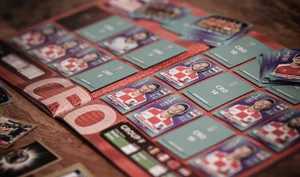Not such a special one: The Premier League shirt “ban”

In an unsurprising move, the English Premier League has collectively agreed to remove gambling sponsorship from the front of clubs’ match day shirts.
For those not interested in sports, this is football (soccer) and the Premier League is one of the most watched professional leagues of any sport, anywhere in the world.
This will certainly be met with smiles by most of the industry’s critics but, let’s face it, this is a largely pointless move made by the league so they don’t lose all the revenue from gambling. It’s placatory at best, pointless at worst. Why?
That’s a great question and one I’m glad you asked. But where do we begin?
The gambling industry – and its critics – has recognised that advertising around sport is potentially a problem for quite a while. Even those industry guardians the Betting and Gaming Council (BGC) have stood astride the issue like a moral colossus, protecting our children from harm with their whistle-to-whistle “ban”.
We will come back to that later.
A positive step, but a small one
First, the issue itself. It’s a positive step but a small one. For a start, it’s only on the front of shirts. You can still have your gambling company name on the sleeve, for example.
I give it about 15 seconds after the ban comes in (which is from the start of the 2025-26 season, sports fans) before a club comes out with a strip where the entire sleeve is a gambling company logo.
But the positives of this: it takes gambling sponsors’ logos off football stickers, I guess (more on that below). It makes them less visible, though not invisible. And… well, that’s it, I think.
That was a short list. And it took the Premier League how long to come to the conclusion this was a good thing to do?
Does the shirt sponsorship ban do enough?
The move does absolutely nothing to disarm critics. Why? Because it ignores other, equally visible forms of advertising related to the sport.
Pitchside hoardings are the big one, for me. I mean, the BGC attempted to do… something, with their whistle-to-whistle ban on TV gambling ads which they reported cut the number of adverts seen by 4- to 17-year-olds by 97%.
Except, we know their maths can be slightly dodgy on a good day. The key here though, is the term “TV gambling ads” – actual television adverts, not advertising seen on television passively. This “ban” by the BGC actually did nothing of the sort and, yet again, gave industry critics more weapons with which to work.
Because for 90+ minutes in any game, those pitchside advertising hoardings, which are now digital in the Premier League and as bright as the sun, are visible.
Better yet, they’re in every photograph from every game, pretty much, so the coverage goes on and on, including in magazines and websites aimed directly at children interested in football. They’re even on the BBC’s Match of the Day.
They’re visible in every single place that football can be seen or an image of it captured. What, then for all of those 4- to 17-year-olds the BGC thought they had saved?
A major sticking point
A recent article in The Guardian stated: “Pitchside adverts are the biggest conduit for gambling branding during a game, according to a study by academics at the University of Stirling, accounting for 38% of the locations where the sponsors are seen.
“The study, of five matches broadcast live on television, found that the logos were visible more than 500 times during the average match.”
A study a few years ago by Goldsmiths, University of London and the University of East Anglia was pretty illuminating and highlights the need to have a total removal of gambling sponsors in the visible parts of the game.
Advertising gambling products to children in the UK is illegal. But of the 636 stickers in the Official Premier League 2020-21 Panini sticker collection, 270 had a visible gambling logo – that’s 42%. Five magazines were analysed and all had visible logos. But they’re just logos… right?
Maybe not. The study explained that kids relate to this merchandise in a different way to adults.
The study’s lead author, Dr Natalie Djohari from the University of East Anglia, said: “Advertising Standards Agency guidelines say that it is the responsibility of marketers to ensure children are not exposed to gambling advertising but a football player emblazoned with a logo, even when it is intended to sell products to adult consumers, has their photo refracted multiple times on to football cards, stickers, magazines and other merchandise.
“In this way, gambling logos very quickly become visible throughout the football-related worlds of child fans.”
Visibility and normalisation
One of the good things that will come from this “ban” (and it’s not a ban, it’s a voluntary action) is that visibility day to day is reduced.
With shirt-front sponsorship comes social visibility and even, you could argue, implied endorsement by the wearer. We don’t actually know how powerful something like this might be on a developing brain. But it’s not a great leap to think that a young child growing up in a house of football fans might favour the brand they’ve been seeing all their lives on the shirts of their mum and dad.
Children’s replica kits presently do not have gambling sponsors on, which is fair enough and common sense. But if I have spilled food down my front, I generally don’t notice because honestly, how often do you look at your own shirt?
If you’ve spilled it down your front, I’ll spot it straight away and I’ll be silently judging you because it’s much more visible to me. The poster on a kid’s bedroom wall with adult players on it has the sponsor on; the website has the sponsor, et cetera, et cetera.
Smoking and drinking
This visibility is a part of normalisation; when it comes to addictive things, normalisation is actually a problem. This is regardless of whether it’s a primary addiction or a comorbidity, by the way. It took decades to reverse the normalisation of smoking, although it has been highly effective overall and tobacco usage is way down in the UK.
The normalisation of drinking has given us more than one generation of binge drinkers and rampant alcoholism, which is basically socially acceptable and in some circles even encouraged. Gambling harm by itself is socially not so pervasive, but its effects are still massive in the vulnerable. If we normalise its advertising to the young, we are taking one almighty gamble that is simply not worth the potential reward.
Falling down the pyramid
It’s still a complicated issue, even aside from how it completely ignores other advertising in the league by pretending it’s not there. For a start, this is only the Premier League gambling sponsorship.
Every season, three clubs are relegated to the Championship, and three clubs are promoted. Unless the entire football league adopts this, how will that work? Say a promoted club has a gambling sponsor, what happens then? “Thanks for supporting us in our rise from the second tier… Seeya!”
“Uh, lads – contract.”
Don’t forget, many of the brands affected by the “ban” are not operating in the UK.
They rely on the visibility of the league in the countries in which they operate.
Some online betting firms that operate in Asia, for example (where let’s not forget, there is but one legal online gambling jurisdiction, and it’s not China), are or have been shirt sponsors. So it’s fair to say some advertisers are illegal gambling operators. That seems like an issue to me.
Facile moves like a “ban” on the shirt front gets us precisely nowhere. If this is an issue (and plenty within, as well as without, the industry believe it is) then tackle it like it’s an issue. Take decisive action, disarm the critics – and let’s not mess around with the kids.

Jon Bruford has been working in the gambling industry for over 17 years, formerly as managing editor of Casino International and presently as publishing director at The Gaming Boardroom, with Kate Chambers and Greg Saint. He owns a large dog with a sensitive stomach and spends his free time learning about stain removal.


